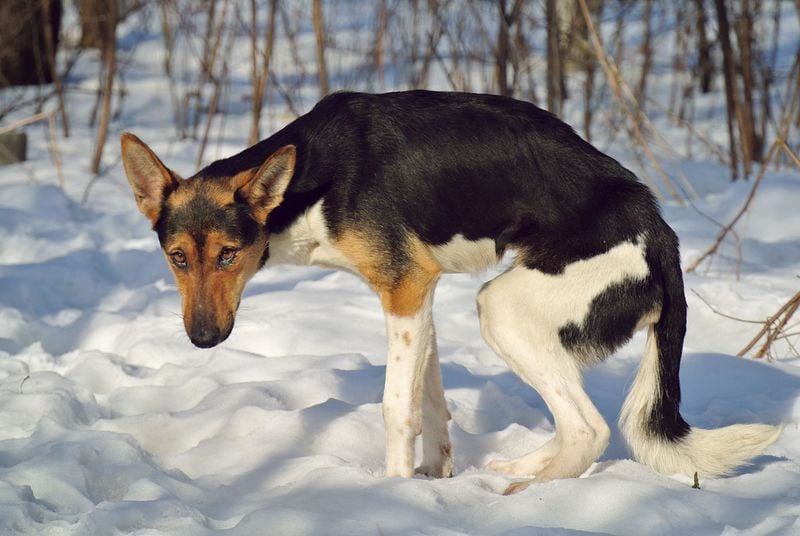11 Cancer Symptoms In Dogs That Are Easy To Miss
Our furry friends can’t tell us when something’s wrong—no whining, no complaints, no “I don’t feel good today.” That’s why it’s so important for pet owners to be vigilant about changes in their dog’s behavior or physical condition. Many signs of serious illness, including cancer, can be subtle—often mistaken for normal aging, minor aches, or even quirks in personality.
Canine cancer is one of the leading causes of death in dogs over the age of 10, but it doesn’t only strike senior pups. Some symptoms come on quietly, gradually, and are easy to dismiss: a slight limp here, a little weight loss there, maybe a few skipped meals or extra naps. But these seemingly minor shifts can point to something far more serious.
The earlier you catch the signs, the better your chances of successful treatment and a longer, healthier life for your pet. Knowing what to look for could save your dog’s life—or at the very least, help them get the care they need, sooner rather than later.
In this article, we’ll walk you through 11 symptoms of cancer in dogs that are commonly overlooked, so you can stay one step ahead when it comes to your best friend’s health.
1. Sneaky Weight Loss Without Diet Changes
Your dog’s collar suddenly feels looser, yet their eating habits haven’t changed. This unexplained weight loss can signal something serious happening inside their body. Cancer increases metabolism and burns calories faster, causing weight to drop even when appetite remains normal.
Many pet parents mistake this gradual thinning for normal aging. Look for bones becoming more prominent, muscle loss, or pants-like breathing. Even a 10% decrease in body weight over a month warrants veterinary attention.
2. Limping That Comes and Goes
Monday your pup limps after playing, Tuesday they seem fine, Wednesday the limp returns. This on-again-off-again lameness often gets dismissed as simple joint pain or overdoing exercise. Bone cancer can cause intermittent pain that pet owners easily rationalize away.
Pay special attention to limping that switches legs or persists during rest. Watch for reluctance to jump, climb stairs, or get up from lying down. Bone tumors typically cause more pain at night, so notice if your dog seems more uncomfortable when settling down to sleep.
3. Sudden Pickiness About Favorite Foods
Rex used to dance with excitement at mealtime but now sniffs his kibble and walks away. Changes in eating habits—whether increased hunger or decreased appetite—can indicate cancer. Tumors may release substances affecting taste or create discomfort when eating.
Some dogs with cancer develop strange new preferences, suddenly rejecting foods they’ve loved for years. Others might eat ravenously but still lose weight. Watch for difficulty chewing, dropping food, or tilting the head while eating—possible signs of mouth tumors.
4. Tummy Troubles That Never Quite Resolve
Occasional upset stomachs happen, but digestive issues that linger or return frequently deserve attention. Gastrointestinal cancers can cause persistent vomiting or diarrhea that seems to improve with medication but never completely resolves.
Look for changes in stool color (especially dark, tarry stools indicating bleeding) or mucus in the stool. Weight loss alongside these symptoms increases concern. Many owners mistake these signs for food sensitivities or irritable bowel, delaying diagnosis.
5. Mysterious Bumps Under the Fur
During cuddle time, your fingers detect a small lump under Bella’s fur that wasn’t there before. Not all lumps are cancerous, but any new growth deserves professional evaluation. The most concerning bumps grow quickly, feel firmly attached, or change in appearance.
Don’t wait to see if bumps disappear on their own. Monthly home exams help catch new growths early—run your hands over your dog’s entire body, including under the tail and between the legs. Record the size of any bumps with a ruler or by comparing to household objects.
6. Strange New Smells From Your Dog
Even the most devoted dog owners admit their pets have distinctive odors. But new or unusual smells—particularly from the mouth, ears, or specific body areas—can signal serious problems. Cancer can create distinctive odors as tumors release compounds or cause tissue breakdown.
Bad breath that persists despite dental care might indicate oral tumors. Foul smells from ears could mean ear canal tumors. Unpleasant odors from specific body areas might point to skin cancers or infected masses.
7. Breathing Changes You Might Dismiss
Slight changes in breathing patterns often go unnoticed until they become severe. Early signs include mild coughing that owners attribute to “something caught in the throat,” slightly faster breathing at rest, or decreased exercise tolerance.
Lung tumors can cause subtle respiratory changes weeks before more obvious symptoms appear. Listen for unusual sounds during sleep or after mild activity. Watch your dog’s sides when resting—counting more than 30 breaths per minute while relaxed could indicate a problem.
8. Unexpected Tiredness in Previously Active Dogs
Max used to race for his ball endlessly but now seems satisfied after just a few throws. This gradual energy decline often gets attributed to aging or weather changes rather than potential cancer. Tumors can steal nutrients from the body or release substances causing fatigue.
Pay attention if your normally social dog begins avoiding interaction or seems disinterested in activities they once enjoyed. Sleeping more than usual, especially during times they were typically active, warrants attention. Many cancers cause progressive lethargy that owners notice only when looking back after diagnosis.
9. Wounds or Spots That Never Heal
That small cut on your dog’s paw has been there for weeks despite your care. Normally, minor injuries heal within days, but cancerous lesions resist healing. Skin cancers often appear as sores that bleed easily, crust over, then bleed again.
Check areas that get less attention during regular grooming—between toes, under the tail, or inside the ears. Bleeding from any body opening (nose, mouth, urinary or anal areas) should never be ignored. Even small amounts of blood in urine, stool, or from the nose could indicate internal tumors.
10. Bathroom Habit Changes That Signal Trouble
House-trained Daisy suddenly having accidents indoors might not be behavioral—it could be medical. Cancer affecting the urinary tract or digestive system often causes changes in bathroom habits that owners mistakenly attribute to training lapses or spite.
Warning signs include straining to urinate or defecate, frequent attempts with little output, or visible discomfort. Blood in urine appears pink-tinged or may look like small drops after urination. Some dogs with urinary cancers lick their genital area excessively due to discomfort.
11. Odd Behaviors That Seem to Come From Nowhere
Your normally coordinated companion suddenly bumps into furniture or tilts their head for no apparent reason. Brain tumors can cause subtle neurological changes before more obvious symptoms emerge. These might include personality changes, confusion in familiar settings, or staring into space.
Other concerning signs include head pressing (pushing the head against walls), circling in one direction, or seizures. Even mild seizures can appear as brief moments of spacing out or unusual jaw movements. Some dogs develop sudden aggression or anxiety due to brain tumors causing discomfort or altered perception.

















